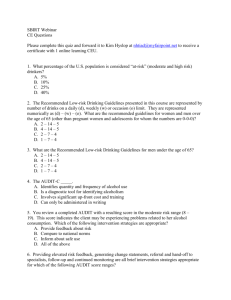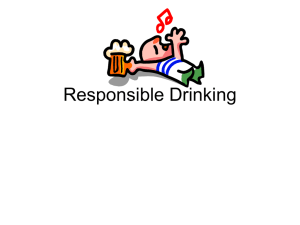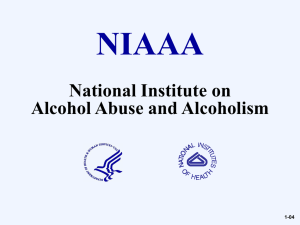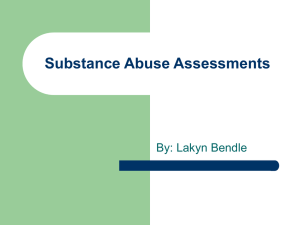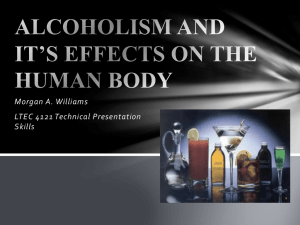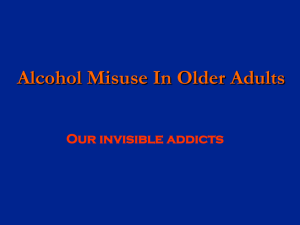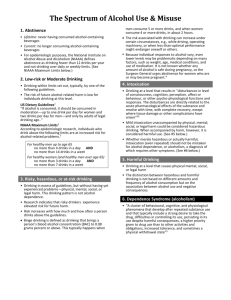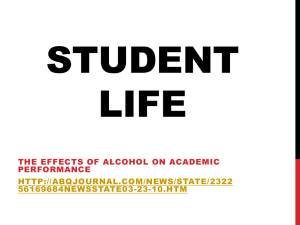Dependence - Moderate Drinking Options
advertisement
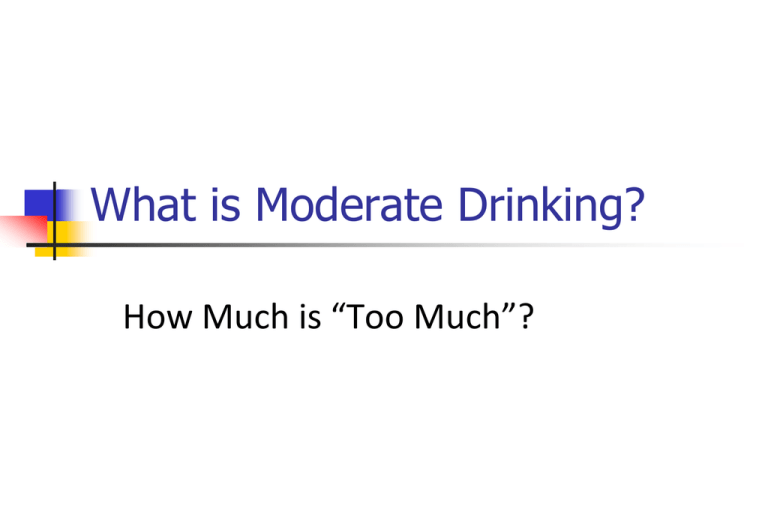
What is Moderate Drinking? How Much is “Too Much”? Continuum of Alcohol Use and Consequences Alcohol Use None Light Moderate Heavy At Risk Low Risk Problem Dependent Severe Small None Moderate Alcohol Problems “Low-Risk” Drinking Limits (NIAAA) “Moderate” or “Responsible” Drinking Drinking alcohol for its positive effects without causing harm or significant risk of harm to self and others Drinking is neither causing new problems or exacerbating pre-existing ones NIAAA Alcohol Use Categories Abstainer Low-Risk (Moderate) Drinker High-Risk or Hazardous Drinker Problem or Harmful Drinker/Alcohol Abuser (DSM-IV 305.0) Dependent or Alcoholic Drinker (DSM-IV 303.9) NIAAA “Low Risk” (Moderate) Drinking Limits Note: These are UPPER LIMITS, not recommended levels of alcohol consumption MEN No more than 14 drinks per week (2 per day) No more than 4 drinks on any one occasion WOMEN & Anyone 65 or Older No more than 7 drinks per week (1 per day) No more than 3 on any one occasion “Low Risk” Drinking- CAVEATS PRESUMES ABSENCE of other risk factors: Pregnancy or attempted pregnancy Medical or psychiatric conditions exacerbated by alcohol use Medications that interact adversely with alcohol Prior personal or family history of addiction Hypersensitivity to alcohol Low Risk (Moderate) Drinking No compulsion to drink, no adverse consequences Based not only the total number of drinks consumed in a given day, but also the rate of drinking so that the blood alcohol concentration (BAC) does not rise too quickly or too high (.06% or lower) For most people, this means drinking (sipping) no faster than one drink per half-hour (not on empty stomach) NIAAA “High Risk” Drinking Frequently exceeds recommended limits Has not yet caused serious adverse consequences, but poses risk of consequences Prime target for early intervention and preventive efforts, such as moderation “Problem Drinking” ALCOHOL ABUSE Evidence of recurrent medical, psychiatric, interpersonal, social, or legal consequences related to alcohol use; OR Being under the influence of alcohol when it is clearly hazardous to do so (e.g., driving, delivering health care services, caring for small children) No evidence of physiological dependence No prior history of alcohol dependence No compulsion or obsession to drink “Alcoholism” ALCOHOL DEPENDENCE BEHAVIORAL syndrome characterized by: Compulsion to drink Preoccupation or obsession Impaired control (amount, frequency, stop/reduce) Alcohol-related medical, psychosocial, or legal consequences Evidence of withdrawal- not required Evidence of tolerance- not required Continuum of Use DSM-IV lumps all SUDs into only two categories, Abuse and Dependence Ignores that there is a continuum of substance use and substance-related harm Provides no severity rating for the disorders or their consequences Proposed DSM-V Revisions Eliminates separate categories of Substance Abuse and Dependence (research studies found no sharp distinction between them) Replaces them within one unified category of “Substance Use Disorder” Adds a Severity Rating Moderate: 2-3 criteria are met Severe: 4 or more criteria are met
